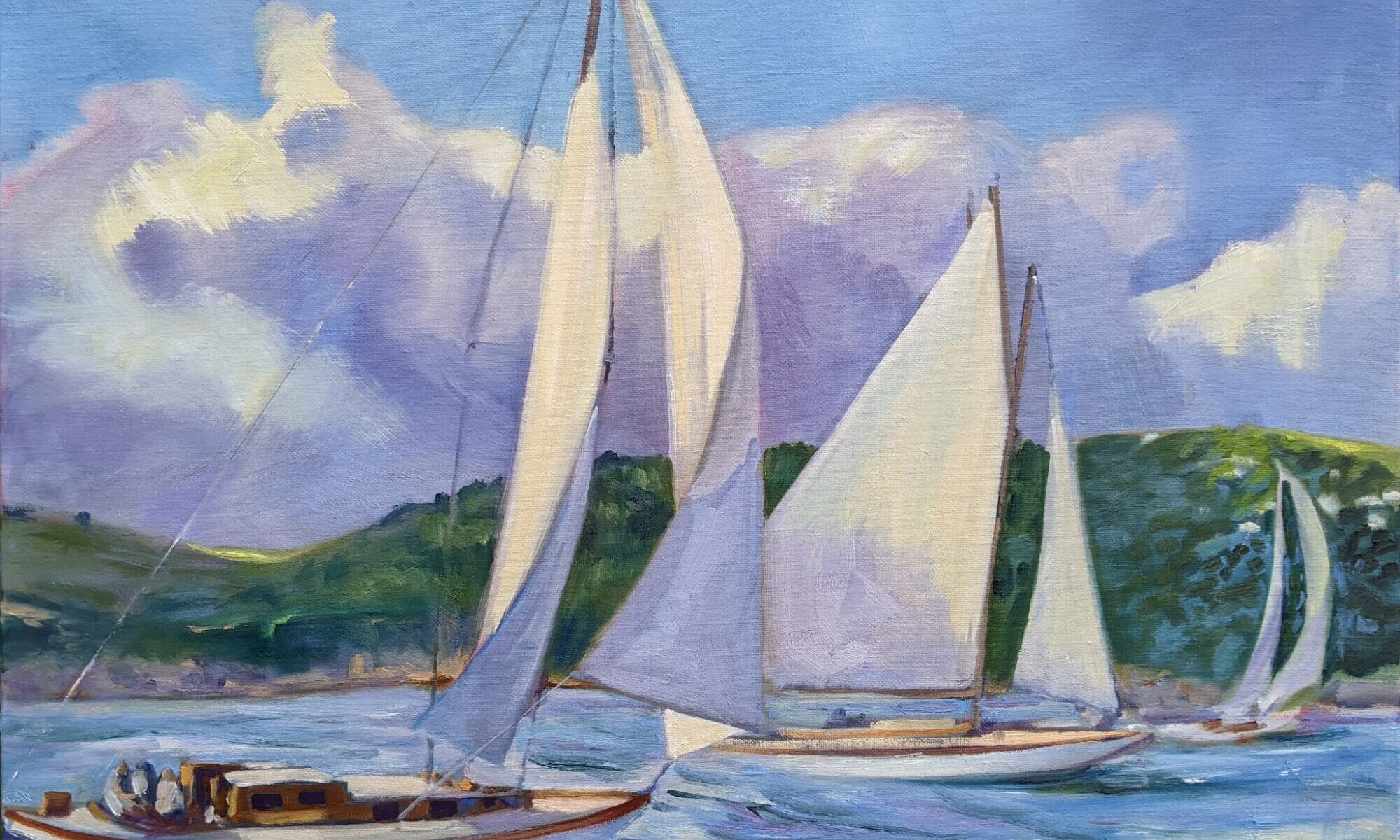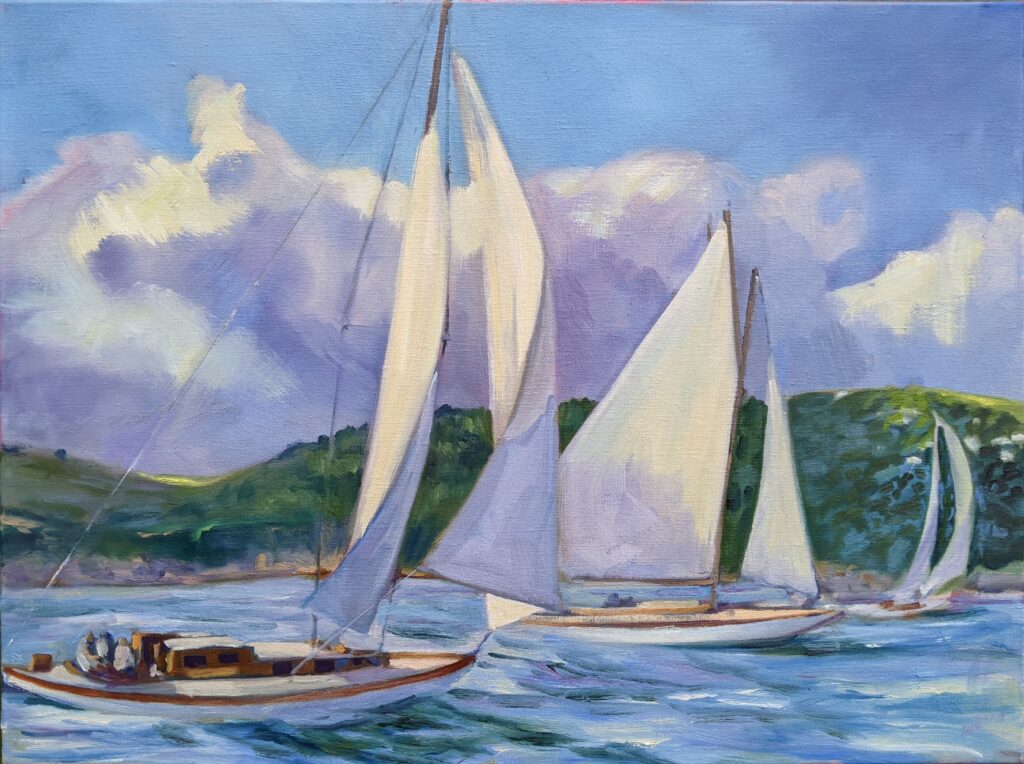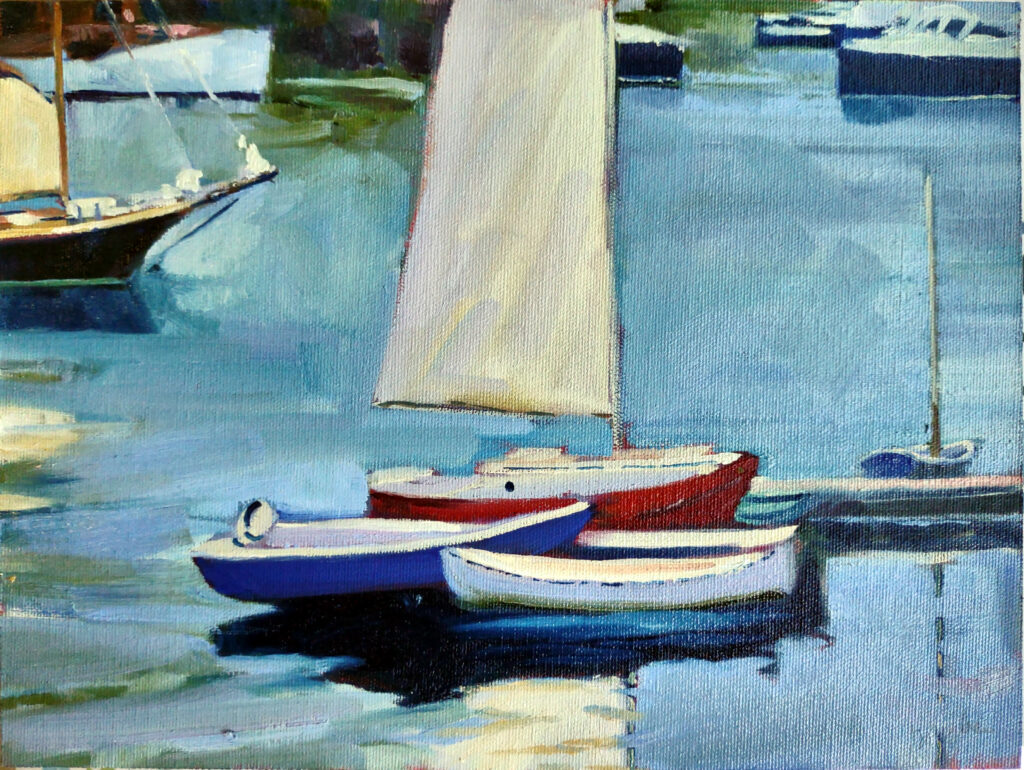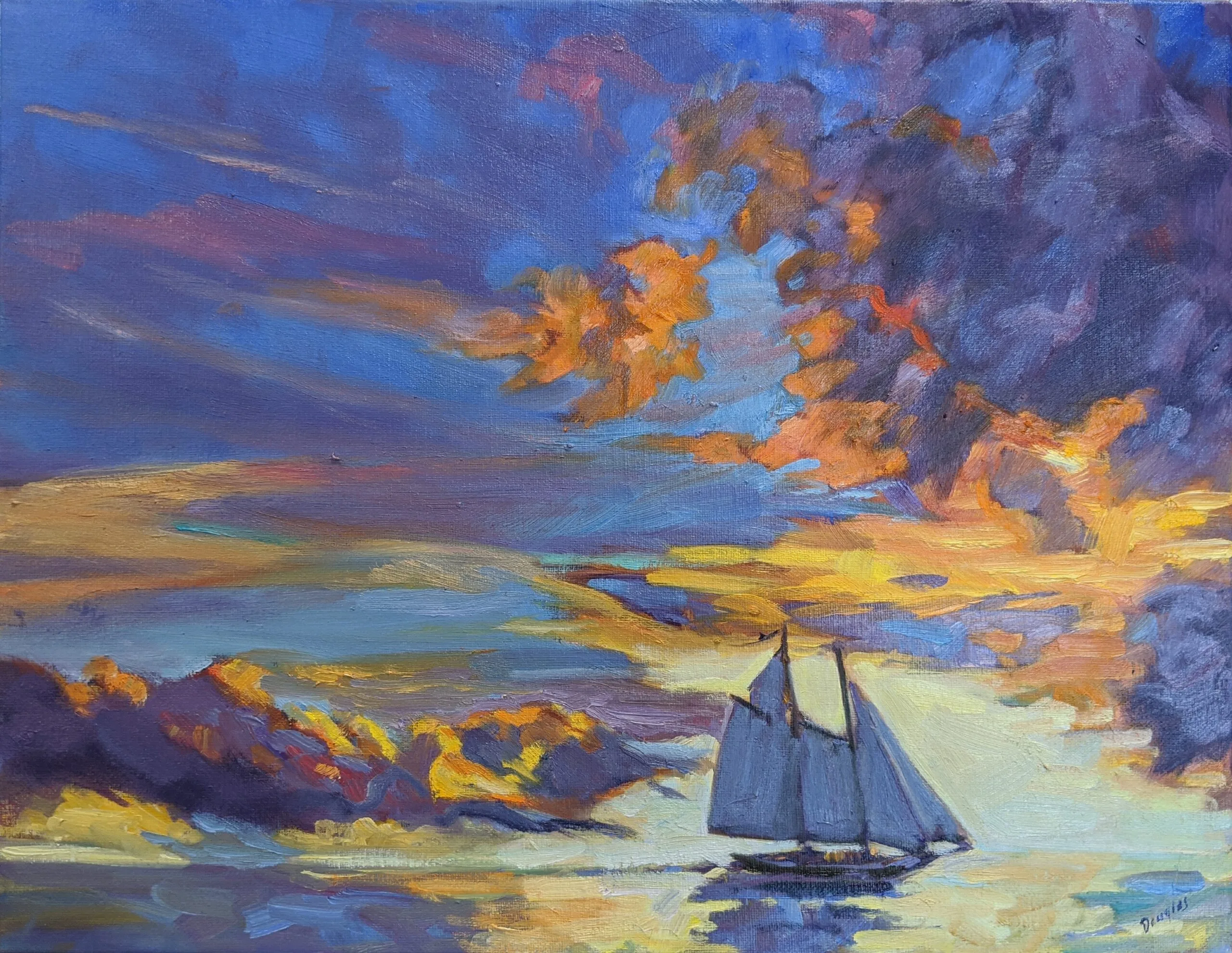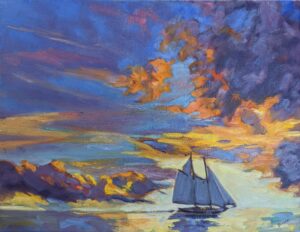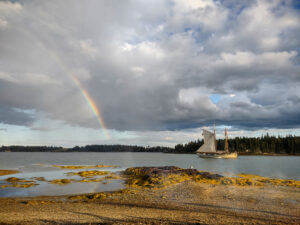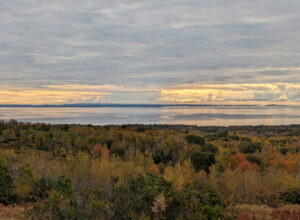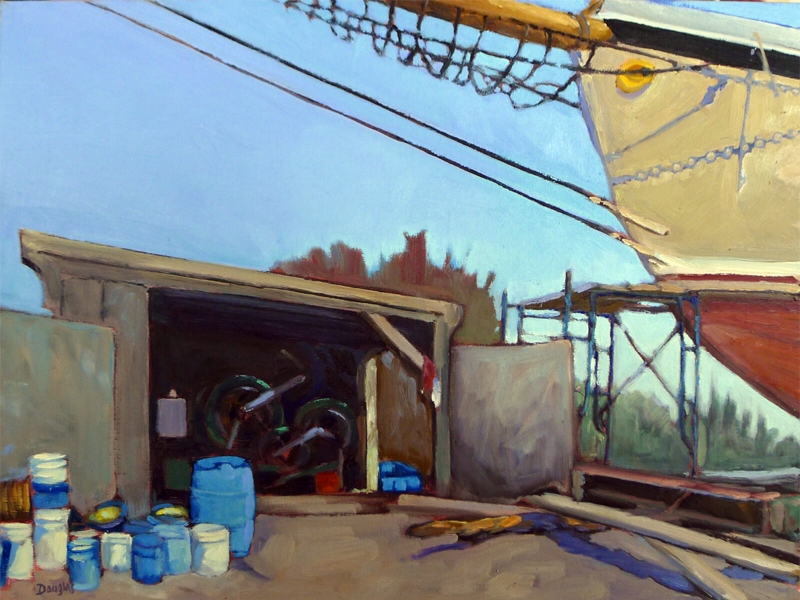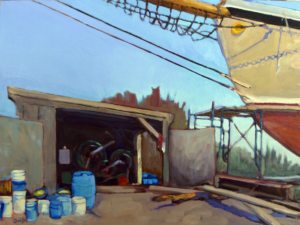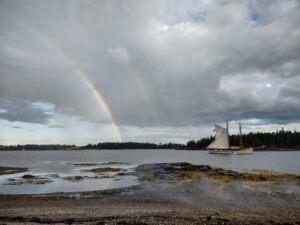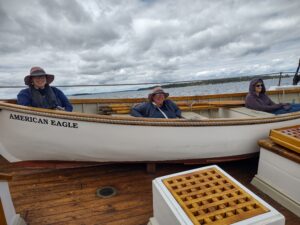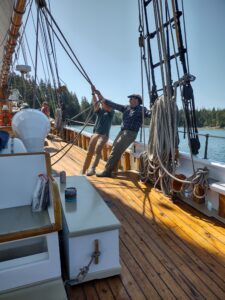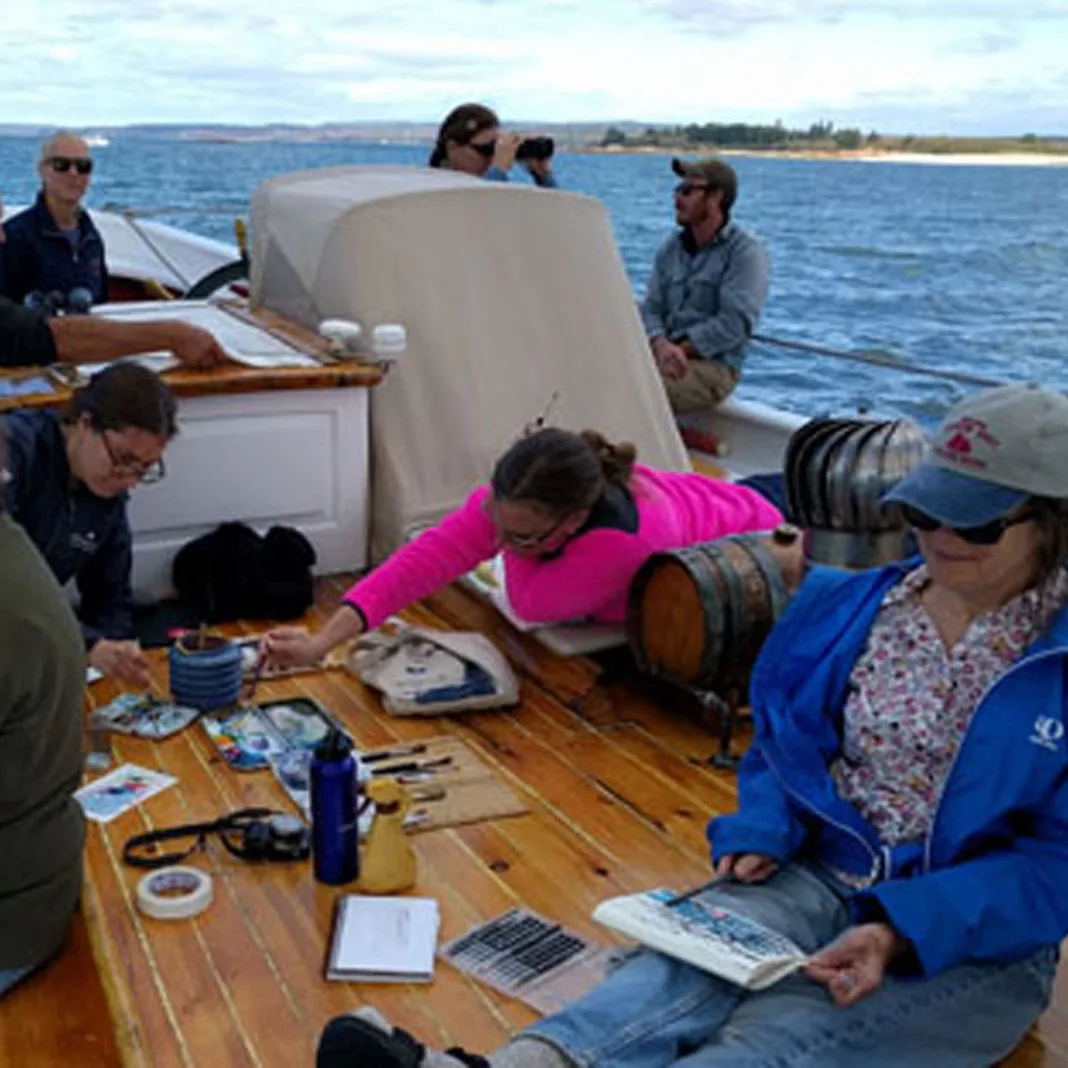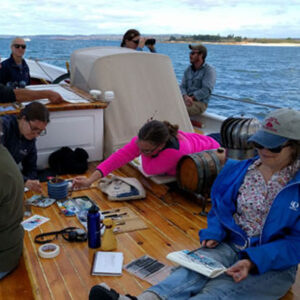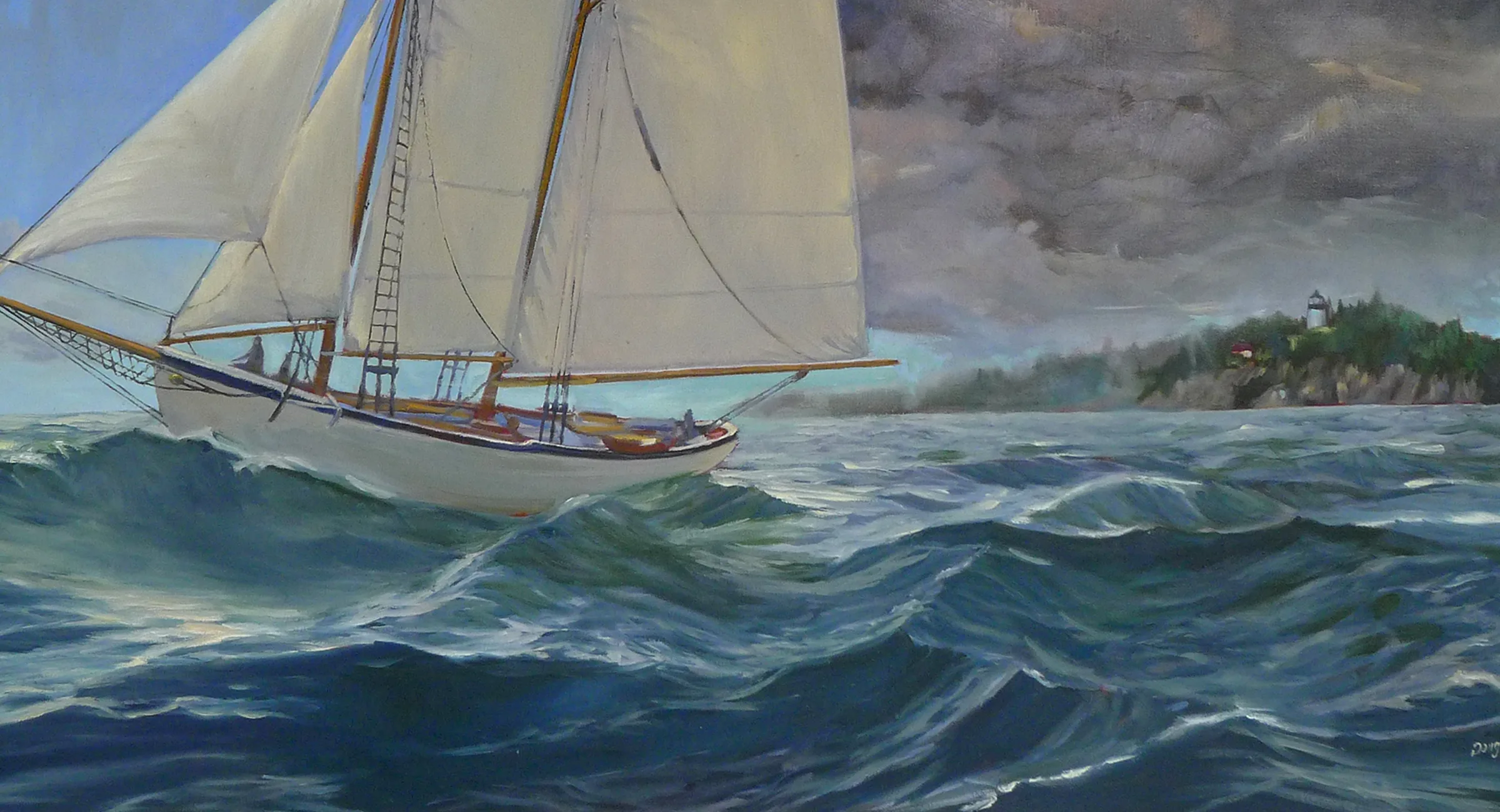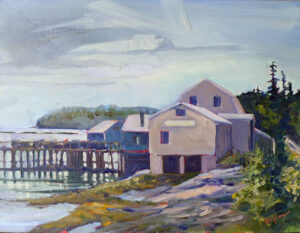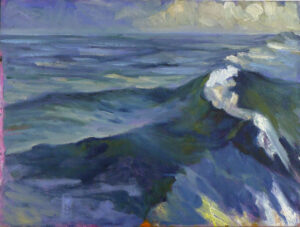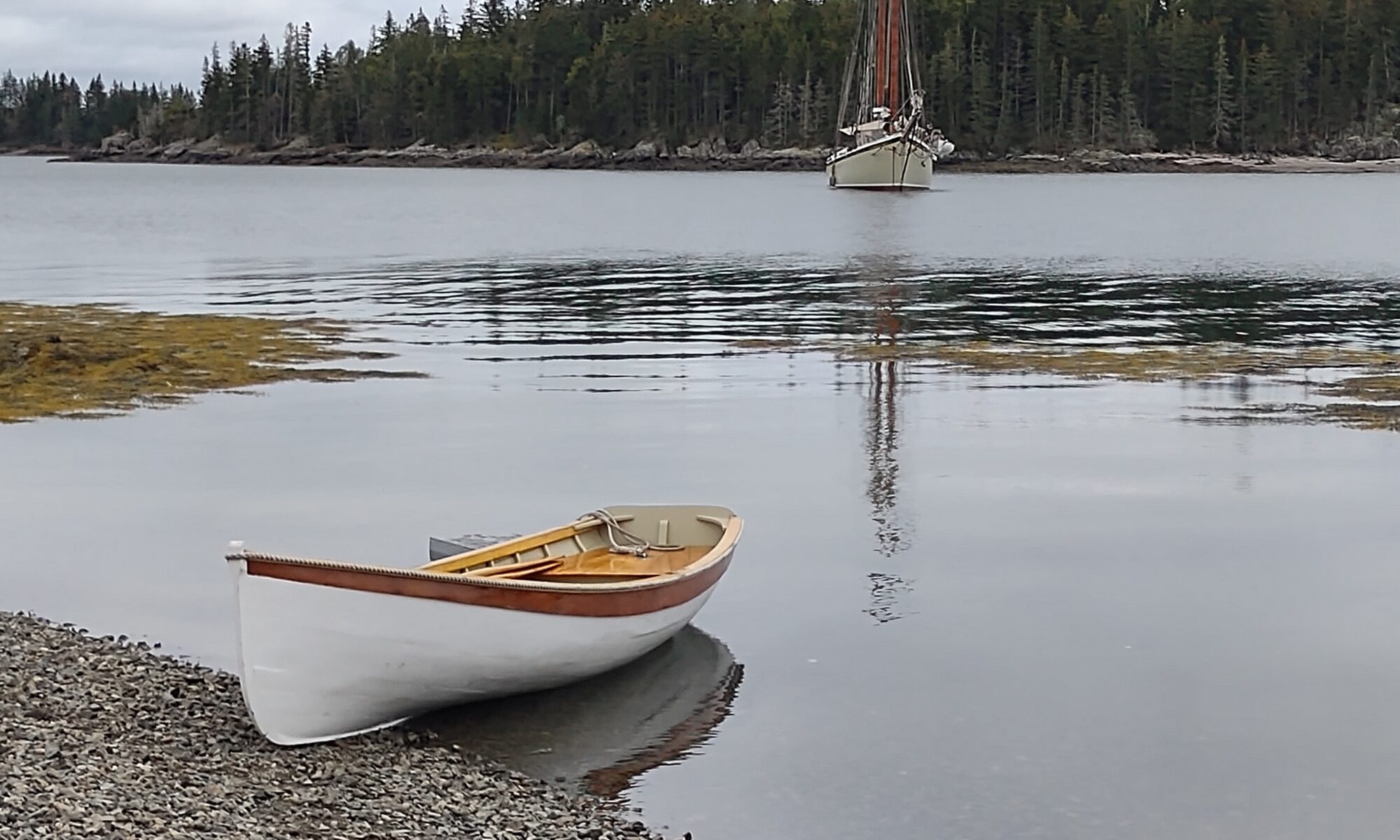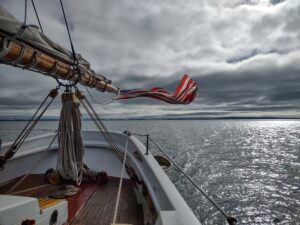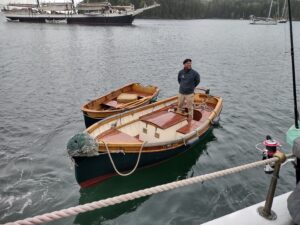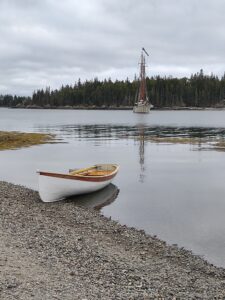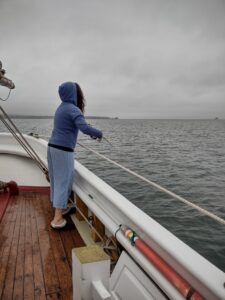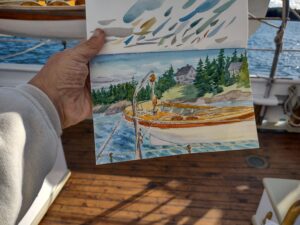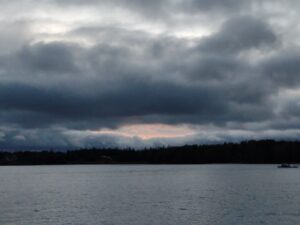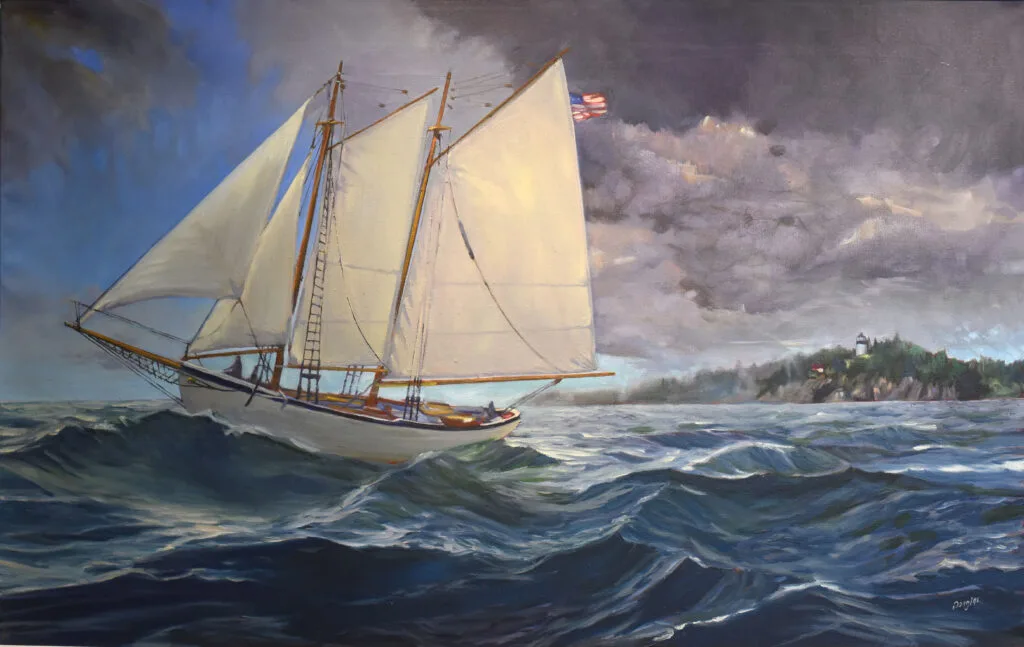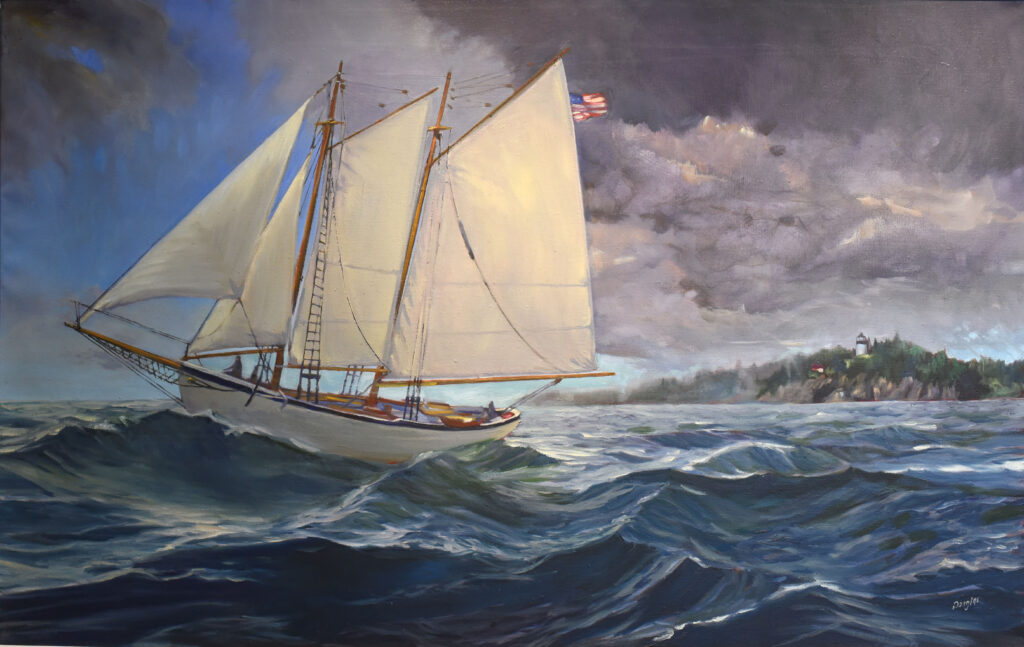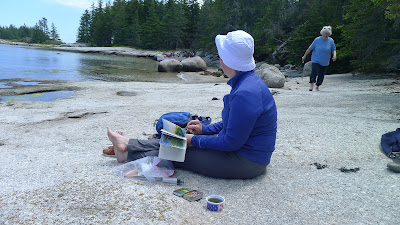When I row in my local harbor, I always tell the person I’m with, “If you’re looking for something for my birthday…” I love rowing quietly around, lusting after sailboats. My heart’s desire is never a big boat, but it’s always beautiful, sleek and wooden. Something I can sail solo would be best.
Of course, this is pure nonsense. The mooring fee alone would scrap my budget. Add to that the work and expense of hauling and winterizing. I’m not talking through my hat here; we had a beautiful old wooden boat until I was in my late teens. Besides, my yard is already cluttered with a skiff, canoe and dinghy, none of which I have time for.
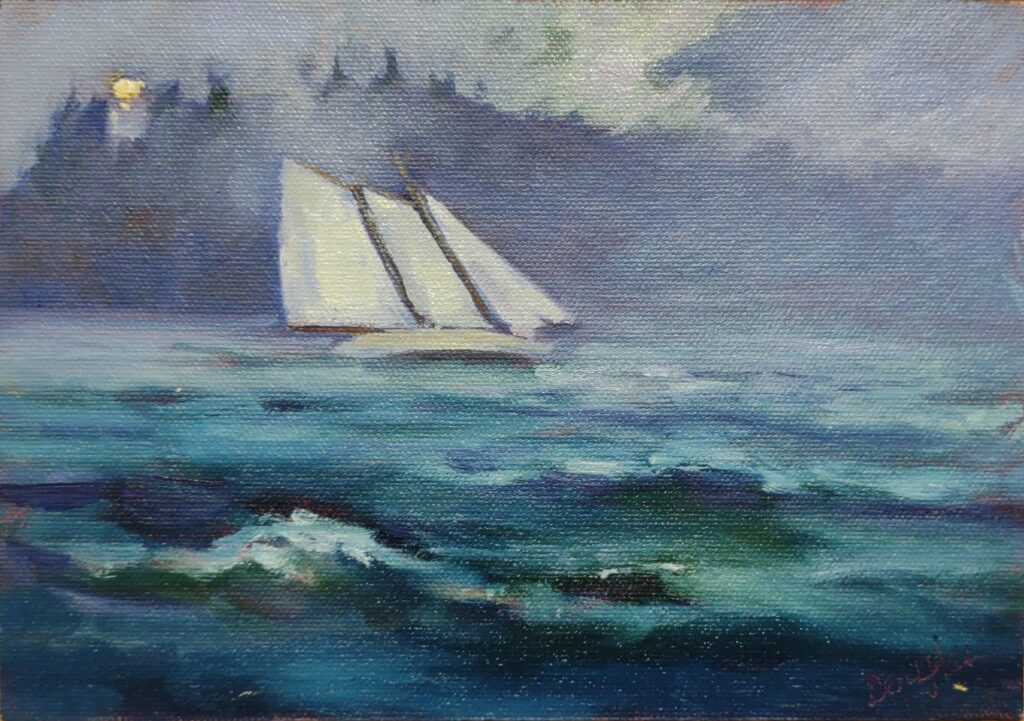
I was reminded of this the other day while listening to the podcast Ridiculous Crime. The hosts were joking that the stupidest thing to do with lottery winnings was to buy a boat. “My father always said it’s a hole in the water into which you pour money,” said host Zaron Burnett. I’ll add two more jokes to his repertoire: “The two best days in a boat owner’s life are the day he buys a boat and the day he sells it.” And, “a friend with a boat is better than owning a boat.”
Should I buy a boat? I’m afraid not, although writing this post has darn near killed me. But there are other ways to enjoy them.
I have a friend who is a boat
I am buddies with a very big boat, the schooner American Eagle. Not only is she the best looking schooner in the fleet, she was impeccably repurposed by Captain John Foss and maintained by Captain Tyler King.
I get to go sailing on her once a year. Even better, my job isn’t night watches or deck swabbing. Instead, I teach watercolor painting. And if you go with us, you too can sail and paint and give no thought at all to cooking or polishing brightwork.
My daughter made a beautiful short reel for Instagram that catches the essence of this trip (above). Here’s another that captures a foggy day on the water. This isn’t sailing with carbon fiber sails that you can adjust with your key fob while surfing the web on your phone. This is sailing as it’s been done for centuries. It’s a wooden boat with traditional rigging, and the opportunities to sail like that grow fewer and fewer.
Hang a boat on a wall
Another way to enjoy sailing is with a painting. I was in an oncologist’s waiting room the other day (for a routine check-up) and noticed that the walls are covered with boat art. They chose boats and the sea because they’re calming, and people in crisis need all the tranquility they can get. But so do you and I, every day.
I paint boats because I love them, and because their journeys are much like our journeys—we go through storms, we have larky bright mornings, and we rest at anchor. I think those are all good reasons to own a boat painting. And as Zaron Burnett would probably tell you, it’ll cost you a lot less to buy a painting of a boat than to keep a real boat. The maintenance is easier, and you’re likely to keep it longer, too.
Reserve your spot now for a workshop in 2025:
- Advanced Plein Air Painting, Rockport, ME, July 7-11, 2025.
- Sea and Sky at Acadia National Park, August 3-8, 2025.
- Find Your Authentic Voice in Plein Air, Berkshires, MA, August 11-15, 2025.
- Immersive In-Person Fall Workshop, Rockport, ME, October 6-10, 2025.

